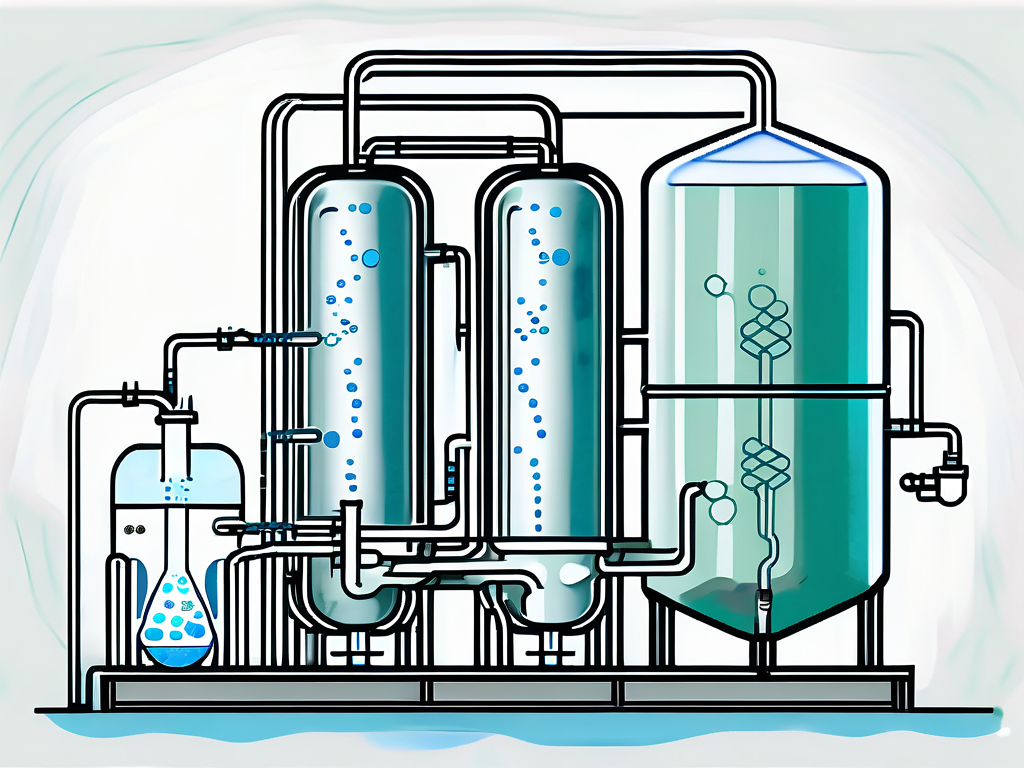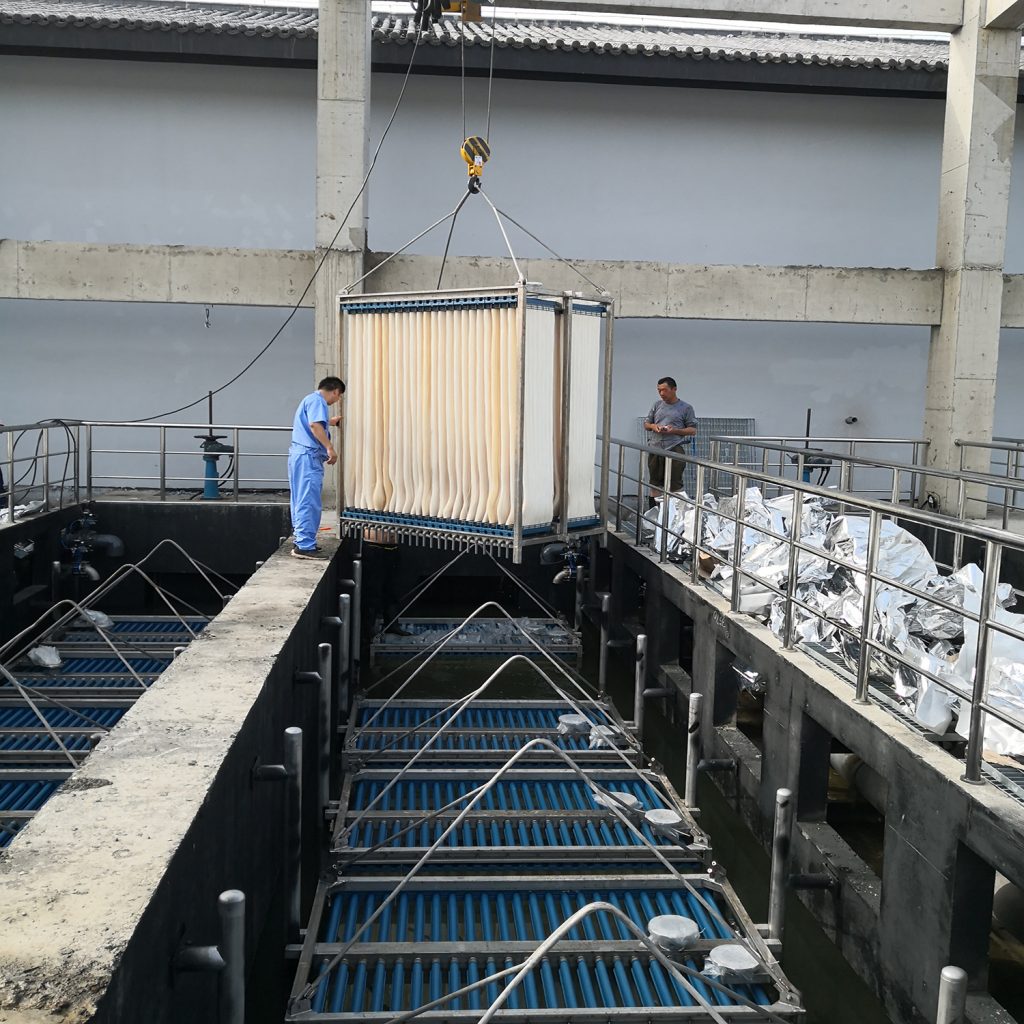Troubleshooting Common Issues with Membrane Bioreactor Systems
Troubleshooting Common Issues with Membrane Bioreactor Systems
Blog Article
The Benefits of Membrane Layer Bioreactors in Sustainable Wastewater Administration
Membrane bioreactors (MBRs) stand for a crucial advancement in sustainable wastewater monitoring, properly merging biological therapy with innovative membrane purification modern technology. This assimilation not only enhances effluent high quality by successfully removing pollutants yet also opens avenues for water reuse in different applications, hence resolving journalism need for source preservation. The portable design of MBRs contributes to significant decreases in ecological impact and operational prices. As the demand for sustainable solutions intensifies, discovering the multifaceted advantages of MBRs may expose unexpected implications for the future of wastewater treatment systems.
Summary of Membrane Layer Bioreactors
Membrane layer bioreactors (MBRs) represent a substantial improvement in wastewater treatment modern technology, incorporating biological destruction with membrane filtration to improve the efficiency of the treatment process. This innovative system incorporates the advantages of conventional activated sludge procedures with membrane layer modern technology, enabling for improved solid-liquid splitting up. MBRs use semi-permeable membrane layers to different treated water from biomass, resulting in top notch effluent that can be reused or safely released into the atmosphere.
The functional layout of MBRs normally involves a bioreactor where microbes break down raw material, complied with by a membrane layer unit that filters the combined alcohol. This configuration not only lessens the impact of the treatment facility however likewise permits for greater biomass focus and decreased hydraulic retention times. Moreover, MBRs are qualified of dealing with a bigger series of pollutants, consisting of pathogens and nutrients, making them ideal for various applications, from local wastewater therapy to commercial effluent handling.
The assimilation of MBRs right into wastewater monitoring systems is a sign of an expanding pattern towards sustainable and efficient techniques in ecological design. Their capability to produce top notch effluent while lessening area demands positions MBR modern technology as a principal in modern-day wastewater therapy services.
Boosted Effluent Top Quality

The membrane layer filtering procedure functions as a physical obstacle, allowing the retention of microorganisms and particle matter, which adds to a more clear and cleaner effluent (Membrane Bioreactor). MBRs operate at higher biomass concentrations than standard triggered sludge systems, advertising much more reliable biodegradation of toxins. This causes a reduction in biochemical oxygen demand (FIGURE) and overall put on hold solids (TSS) degrees in the final effluent
Furthermore, MBRs demonstrate superb performance in dealing with challenging wastewater structures, such as commercial effluents and wastewater with high nutrient tons. As an outcome, the effluent created is typically of higher high quality, permitting for more versatile disposal choices and lowered environmental effect. Inevitably, the enhanced effluent top quality achieved with MBR modern technology emphasizes its essential function ahead of time sustainable wastewater administration methods.
Water Reuse Opportunities
The premium effluent produced by membrane bioreactors (MBRs) opens substantial opportunities for water reuse in various applications. MBRs successfully remove contaminants, including microorganisms, put on hold solids, and raw material, resulting in treated water that satisfies or surpasses regulatory criteria for reuse. This top quality enables the implementation of water recycling efforts across diverse industries.
One famous application remains in check farming, where treated wastewater can be used for watering, advertising lasting farming methods while saving freshwater resources. Additionally, MBR-treated effluent can be used for industrial procedures such as air conditioning, cleansing, and as a procedure water resource, substantially lowering the demand for drinkable water in these operations.
In metropolitan atmospheres, MBRs help with making use of reclaimed water for landscape irrigation, toilet flushing, and various other non-potable usages, adding to the total resilience of water supply systems. Additionally, the assimilation of MBR innovation in decentralized systems help in handling local water demands, particularly in water-scarce areas.
Minimized Environmental Impact
Just how can the adoption of membrane bioreactors (MBRs) contribute to a decreased environmental influence in wastewater administration? MBRs considerably boost the therapy efficiency of wastewater while lessening environmental disruptions. By integrating organic therapy processes with membrane purification, MBRs efficiently remove a large range of contaminants, consisting of natural issue, nutrients, and microorganisms. This innovative filtration results in higher-quality effluent, which is important for shielding water communities and decreasing the worry on natural water bodies.
Furthermore, MBRs run at reduced hydraulic retention times contrasted to traditional systems, resulting in smaller therapy plant footprints. This portable design lowers land usage, consequently you can try here preserving all-natural environments and biodiversity. The procedure additionally produces less sludge than traditional approaches, reducing disposal obstacles and decreasing greenhouse gas emissions connected with sludge administration.
Additionally, MBRs promote the recuperation of important resources, such as water and nutrients, adding to a round economy. By allowing water reuse for watering or commercial procedures, MBRs help minimize freshwater deficiency, hence advertising lasting water navigate here make use of methods. Eventually, the adoption of MBR technology represents a substantial stride in the direction of decreasing the environmental impact of wastewater monitoring systems.
Economic Advantages of MBRs

Furthermore, MBRs promote the production of top notch effluent, which can be reused for different applications, such as agricultural irrigation and industrial processes - Membrane Bioreactor. This reuse capability can significantly lower water purchase expenses, providing a financial incentive for sectors encountering rigid water guidelines
The portable layout of MBR systems likewise leads to decreased land demands, which is particularly valuable in city locations where property is costly. By minimizing area, sectors and communities can save money on land acquisition and maintenance costs.
Moreover, MBRs usually need less constant upkeep and have a longer life expectancy than conventional systems, further adding to cost financial savings. In recap, the economic advantages of MBRs-- varying from reduced functional costs to land financial savings and effluent reuse-- make them an engaging option for lasting wastewater administration, supplying both long-term and instant financial advantages.
Verdict
In addition, MBRs contribute to decreased ecological impacts with compact layouts and reduced sludge generation. Economic advantages better boost their practicality, making MBRs an appealing solution for addressing the challenges of wastewater therapy and advertising sustainable resource management.
Membrane bioreactors (MBRs) stand for a crucial innovation in sustainable wastewater management, successfully merging biological therapy with innovative membrane filtering technology.Membrane bioreactors (MBRs) stand for a considerable development in wastewater treatment innovation, integrating organic destruction with membrane filtration to boost the efficiency of the therapy process.Accomplishing enhanced effluent quality is one of the most substantial advantages of utilizing membrane bioreactors (MBRs) in wastewater treatment.Additionally, MBRs demonstrate excellent efficiency in treating challenging wastewater make-ups, such as industrial effluents and wastewater with high nutrient lots.Integrating membrane layer bioreactors (MBRs) right into wastewater management not just decreases environmental influence however additionally provides substantial economic benefits.
Report this page